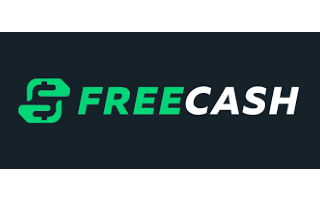Filing for bankruptcy isn’t an easy step to take. While the process is difficult, the hardest part often comes when you’re trying to rebuild your finances, your credit score and your life. After your bankruptcy is discharged, you may find yourself in need of a post-bankruptcy loan. While it sounds difficult, there are some lenders who offer loans to clients with bankruptcies on their records.
Compare bad credit personal loans
Compare other products
We currently don't have that product, but here are others to consider:
How we picked theseFinder Score for personal loans
To make comparing even easier, we came up with the Finder Score. Interest rates, fees and features across 40+ personal loans are all weighted and scaled to produce a score out of 10. The higher the score the better the loan—simple.
Compare cash advance apps
Finder Score for cash advance apps
To make comparing even easier, we came up with the Finder Score. Interest rates, fees and features across 5+ cash advance apps are all weighted and scaled to produce a score out of 10. The higher the score the better the loan—simple.
⚠️ Warning: Be cautious with payday loans
High-cost payday loans are unsustainable for long-term borrowing, with up to $14 charged per $100 borrowed. If you're experiencing financial hardship, consider calling Credit Counselling Canada for free financial counselling (Monday-Friday 8:00am-5:00pm at +1 866-398-5999). You may also want to consider payday loan alternatives.Compare payday loans
Alternative: Earn money through surveys & games
- Earn an average of $300 per offer
- Sign up in minutes
- $5 sign-up bonus when you start your first task
Key takeaways
- Bankruptcy stays on your credit report for at least six or seven years, making it hard — but not impossible — to get a loan.
- Bankruptcy loan options include personal loans, cash advances, payday loans, auto title loans, secured credit cards and credit builder loans.
- Make sure you meet lenders’ eligibility criteria and can afford loan repayments before applying, and expect high interest rates.
Can you get a loan if you declared bankruptcy?
If your bankruptcy is discharged, your options may be more limited, but you do have options. Since a first bankruptcy stays on your credit report for six or seven years (and a second bankruptcy for up to 14 years), be wary of the financial products that you apply for. Should you apply and be denied, you could damage your credit score further.
Always contact a lender, be honest about your financial history, and ask if you’ll be considered before submitting an application. While a payday loan has the most lenient eligibility requirements, it also has exorbitant rates and extremely short repayment terms, so consider it only as a last resort.
What kinds of bankruptcy loans can I get?
Personal loans, cash advance apps and payday loans are viable unsecured options post-bankruptcy. You can also consider secured options like auto title loans or secured credit cards, or credit builder loans to help rebuild your credit. Learn more about each option below.
1. Bad credit personal loans
Bad credit personal loans are available from alternative lenders. While standard personal loans offer large amounts, if you’ve just been discharged from bankruptcy, lenders may only approve you for low amounts under $10,000. Be prepared for interest rates between 18% - 35% because lenders will consider you a risk due to your history of bankruptcy.
To boost your odds of finding a lender who can finance you, check out loan search platforms like Loans Canada or LoanConnect. You’ll apply once to get matched with suitable lenders.
2. Cash advance apps
Cash advance apps are fairly new in Canada. They’re small online loans of up to $500, and you won’t need to go through a credit check to get approved for one. You pay no interest on these loans, but you may pay a monthly fee.
To get approved for a cash advance, it’s best to have a recurring income paid directly into your bank account. And if you’d like to lower your cost as much as possible, check out Nyble and Bree. Both these apps offer no-fee, no-interest advances if you opt for three-day funding.
3. Payday loans
These are small loans with repayment terms usually within 62 days. Borrowing amounts are between $100 and $1,500, and the cost of borrowing is $14 for every $100 borrowed.
Only apply for a payday loan after bankruptcy as an absolute last resort because it’s an extremely expensive loan. Before you apply, make sure you’ll have enough income left to pay for other debts and expenses once you repay your loan. If you don’t have enough income left, you may be forced to take out another payday loan.
If you need help with debt or money management, learn about free credit counselling services available to you.
4. Auto title loans
It’s easier to get approved for a secured loan than an unsecured loan after bankruptcy, since the lender can recoup any potential losses by seizing the collateral that you used to back your loan.
An auto title loan is one type of secured loan, where you can use your vehicle as collateral. You can then get access to a loan for anywhere between 25% and 50% of your car’s value. Auto title loan APRs generally range between 9% and 35%. You can apply car title loan lenders like Pit Stop Loans, Fast Action Finance and Prudent Financial.
Before applying for an auto title loan, contact the lender to discuss your options and be honest about your financial past.
5. Secured credit cards
With a secured credit card, you give the lender a security deposit, which acts as collateral, and then use the card like a regular credit card up to a certain limit. The amount you deposit —usually between $200 and $10,000 — often becomes your credit limit. Because it’s secured, the lender takes on less risk, so you have a higher chance of approval even after getting discharged from bankruptcy.
Like typical credit cards, you’ll be charged interest, generally around 15% to 20%, on your purchases. If you default on payments, the lender can seize the deposit. Keep in mind that secured credit cards may come with monthly and/or annual fees.
The downside is that using a prepaid card in bankruptcy won’t improve your credit score. This is because, like a debit card, your card activity isn’t reported to the credit bureaus.
6. Credit builder loans for bankrupts
As the name suggests, a credit builder loan helps you rebuild your credit score, which can be helpful if you’ve filed for bankruptcy. With this loan, you make payments to the lender and receive the loan funds only after you make all your payments. So if you need money right now instead of the future, this loan may not be the right fit. Lenders that offer credit builder loans include Spring Financial, Innovation Federal Credit Union and Affinity Credit Union.
Credit builder loans tend to have lower maximum loan amounts at around $1,250 – $10,000, with interest rates generally ranging between 9.5% and 20%. Loan terms tend to be shorter, maxing out usually between 6 and 24 months.
Other types of bankruptcy loans in Canada
Besides personal financing, you also have access to other types of loans once you’ve been discharged from bankruptcy.
Bankruptcy mortgage
Since buying a house is one of the biggest purchases most people will make, lenders are very careful when approving mortgage loans. That said, it’s possible to get a mortgage with bankruptcy on your record. The most important factor is to show the lender that you’ve started successfully building up your credit history.
Each lender has their own criteria around bankruptcy mortgage requirements, but you’ll usually need to be discharged from bankruptcy for anywhere between a few months and two years to be eligible. Having a large down payment can also help improve your chances of approval.
Bankruptcy car loans
It’s possible to get a car loan after declaring bankruptcy, although your choice of lenders will be limited. You can improve your chances of getting approved for a bankruptcy car loan by taking some time before you apply to first build up your credit history. It can also help to choose a less expensive car and have a large down payment.
The lender will likely have to be in contact with your licensed insolvency trustee at some point in the process. You should expect the car loan interest rates you’re approved for to be on the higher side.
What to consider before you apply for bankruptcy loans
- Calculate if you can afford the repayments. Since your assets and income may have been affected by bankruptcy, you’ll need to seriously consider whether you can afford the loan repayments.
- Take the decision seriously. Applying for a loan when you’re in a difficult financial situation isn’t a decision that should be taken lightly. Consider the reason why you’re taking out the loan and determine if there are other, more affordable ways of paying for what you need without taking out a payday loan.
- Understand that you’ll be charged high interest rates. Lenders see borrowers who have previously defaulted on payments as higher risk, which is why they charge them higher interest rates.
What is bankruptcy?
Bankruptcy is the legal process where you declare that you can no longer afford to repay your debts. The process involves you signing all of your assets over to a licensed insolvency trustee lawyer. You’ll then be legally discharged from paying back your debts. Once you’ve filed for bankruptcy, creditors can no longer contact you or garnish your wages to collect debts. Just be aware that filing for bankruptcy won’t necessarily eliminate all of your debts, and your credit score will decrease dramatically.
How to find bankruptcy loans in Canada
There are a few things you can do to narrow down your options and find the right bankruptcy loan in Canada for you. Taking these steps before you apply for post-bankruptcy loans can help ensure you’re in the best position to qualify:
- Get a copy of your credit report. You’ll want to know your credit score and what your credit report looks like before you apply for a loan after bankruptcy. You can request a copy of your credit report from one of Canada’s main credit bureaus, Equifax or TransUnion. Once you know your score, you’ll be able to figure out which loans you can apply for.
- Check your credit report for mistakes. Go through your credit report very carefully to make sure that there are no errors. Errors in your report could bring your score down even further. If you find any errors, report them to the credit bureaus to have them corrected. Learn more about correcting errors on your credit report here.
- Narrow down your options. Compare lenders that offer credit cards or loans to clients with bankruptcies, like the lenders above. You may want to call any providers you’re interested in to ask about the minimum credit score requirements and see if they have any procedures in place for approving loans with bankruptcies.
How can I be approved for bankruptcy loans?
While there are lenders who will consider applicants who are in bankruptcy or who have previously been bankrupt, filling out the application isn’t all it takes to be approved. Here are some of the requirements you may need to meet.
- Income. This is probably the most important factor for your application because lenders use income to determine whether you have the ability to repay a loan. Lenders typically have minimum income requirements, and you’ll need to provide proof of income, such as pay stubs or bank statements, to show that you meet the minimum.
- Employment situation. The stability of your employment also plays a factor, especially if you’re self-employed or a part-time worker. Different lenders have different restrictions, so be sure to check with the lender before applying.
- Age and location requirements. Most lenders only offer loans if you’re the age of majority in your province (18 or 19), and they may only service certain provinces and territories. You’ll need to provide them with a government-issued ID with your name and address, such as your driver’s licence.
- Assets. For loans after bankruptcy, the lender may require you to secure an asset for the loan as a guarantee in case you default.
- Guarantor. If you don’t meet the lender’s criteria, you may be able to apply with a guarantor to increase your chances of being approved. A guarantor agrees to sign the loan with you and cover your payments if you default on them. Their finances would need to be in good shape in order to qualify.
How does bankruptcy affect my credit and loan eligibility?
Whether you’re currently in bankruptcy or have a bankruptcy listed on your credit report, you’ll need to understand the long-term effects it has on your credit score and your financing eligibility.
- Your credit report. A first bankruptcy will remain on your credit report for six to seven years, while a second bankruptcy will remain on your report for up to 14 years.
- Your credit score before bankruptcy. If you had poor or bad credit before you declared bankruptcy, then your credit won’t take a huge hit because it’s already low (with the lowest possible score being 300). Lenders will take into account your credit history before and after bankruptcy and make a decision based on all of the facts.
- Your loan eligibility. Lenders may view your application as risky since you’ve demonstrated your inability to pay back your debts in the past. Once you find a lender willing to provide you with a loan, make sure you’re able to repay it in order to avoid falling into the vicious cycle of debt again.
- Your interest rate. Be aware that you can’t file for bankruptcy again for a few years. This means that predatory payday lenders will offer you money at very high interest rates. If you can avoid taking out a payday loan, you should; otherwise, you might find yourself stuck in another, often worse, debt spiral.
- Your payment history. If you do decide to get a loan, make sure you have a steady income that’ll help you pay it back on time and in full. This will help rebuild your credit after bankruptcy, which means you’ll have access to better rates down the road.
Frequently asked questions
Sources
More guides on Finder
-
9 Payday Loans & Cash Advances in Hamilton, Ontario
Compare cash advance apps and instant payday loans in Hamilton for when you need money fast.
-
8 Payday Lenders & Cash Advance Apps in Saskatoon
Compare payday lenders and cash advance apps for when you need a fast, short-term loan.
-
7 Loans Like Cash Money
Compare payday lenders and cash advance apps to find the best Cash Money alternative for you.
-
6 Payday Loans & Cash Advance Apps in Winnipeg, Manitoba
Compare payday loans in Winnipeg and cash advance apps when you need a short-term loan.
-
E-Transfer Payday Loans in Canada 24/7
Find out which licensed lenders can e-transfer payday loans in Canada, including those that offer 24/7 funding.
-
ODSP Loans: Compare 24/7, E-Transfer Options
Find out where you can apply online for ODSP loans and get funded on the same day.
-
Online Loans That Accept BC Disability Income
Currently receiving BC disability assistance and need a loan? Explore your options here.
-
10 Best Payday Loans in Toronto
Compare eight payday loans in Toronto and learn how to find the right loan for you.
-
Payday Loans for Students (Plus Alternatives)
In our handy guide, we explore options for getting a payday loan, personal loan or cash advance as a student.


